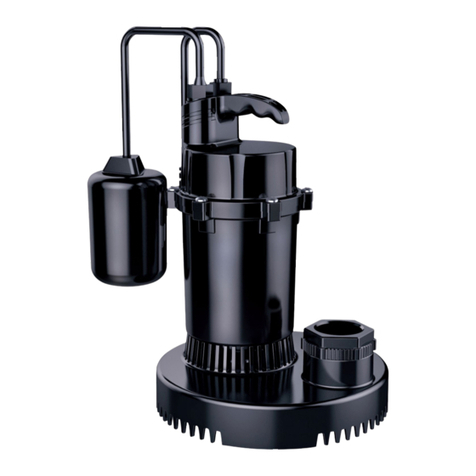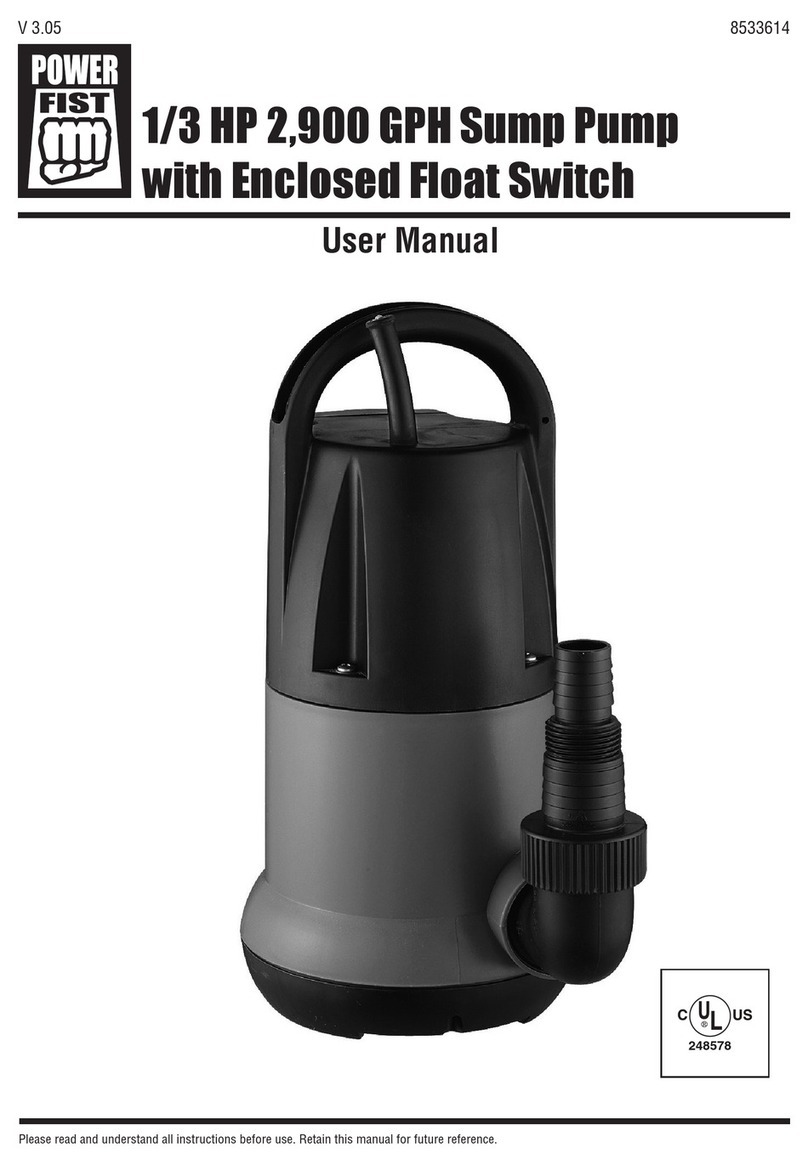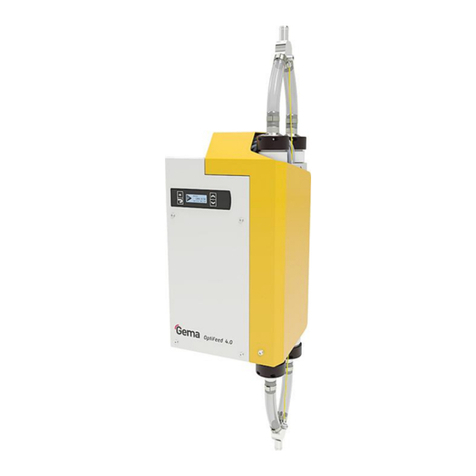GL HJ-W Series User manual

GL Environment
1
Mechanical diaphragm pump
User manual
Please read this manual carefully before using.
Shanghai GL Environmental Technology Co., Ltd
E-MAIL:[email protected]
TEL:86-21-64897786
Fax: 86-21-51686350
Address: #4, No.188 of Guanghua road, Minhang area,Shanghai,
China

GL Environment
2
ⅠIntroduction
The five series of mechanical diaphragm pumps HJ-W、HD、HJ-Z、HJ-D are
reciprocating compound dosing pumps designed and developed by our
company.The transport flow rate of HJ-W pump reaches 30L/H, pressure is 1.0Mpa,
HD and HJ-L pump reaches 150L/H, and the pressure is 1.0Mpa.HJ-Z pump
reaches 500L/h and the pressure is 1.2Mpa. and HJ-D pump transport flow up to
2000L / h, pressure is 1.0Mpa.These five series of pumps feature is mechanically
driven diaphragm.The diaphragm eliminates the structural form of the PTFE thin
membrane combined with the rubber and the iron core, and the corrugation increases
the diaphragm stroke.The stroke adjustment mechanism replaces the effective stroke
adjustment design of the conventional eccentric cam based on the working principle
of the variable eccentric mechanism. This design significantly reduces the pulsation of
pressure and flow, so that the flow rate is in the range of 10 to 100%, and the stability
accuracy can be controlled at ±2%.
ⅡOperating principle of the pump
The pump is composed of two parts: the transmission end part and the hydraulic
end (pump head) part.The output flow of the pump depends on the stroke speed of the
drive end, the diameter of the diaphragm (pump head) and the length of the
diaphragm stroke.When the pump is running or stopped, the stroke length can be
changed by adjusting the stroke adjustment hand wheel. According to the variable
eccentric crankshaft rotation, the adjustable eccentric crankshaft transmits the
reciprocating motion to the diaphragm through the connecting rod, causing the
diaphragm to flex and deformation.The stroke length can be adjusted by changing the
position of the variable eccentric crankshaft on the connecting rod.When the pump is
in the suction stroke, the diaphragm starts to move backwards, and the pressure in the
pump head immediately decreases; when the pump head pressure is lower than the
suction line pressure, the valve ball of the suction port check valve is pushed up
upward,the medium in the inlet line enters the pump head chamber.When the liquid
suction stroke ends, the diaphragm movement stops instantaneously, the pressure in
the pump head is equal to the pressure in the suction line, and the suction port check
valve is reset.
When the pump is in the discharge stroke, the diaphragm begins to move forward
and the pressure in the pump head rises immediately. When the pump head pressure is
higher than the discharge line pressure, the discharge port check valve ball is "pushed
open" upward, and the liquid in the pump head enters the discharge line. When the
discharge port stroke ends, the diaphragm stops moving again. The pressure in the
pump head is the same as the pressure in the discharge line, and the discharge port
check valve is reset and then the next cycle is started. During the suction stroke, the
pressure in the pump head must be higher than the material vapor pressure. If the
liquid pressure is lower than its vaporization pressure, cavitation will occur and affect
the performance of the pump.

GL Environment
3
Ⅲ Technical parameters
1. Technical parameters sheet of HJ-W series mechanical diaphragm metering
pump
Features:
1, The structure is completely leak-free.
2, It can be used PVC, PTFE, 304, 316, etc. as the pump head material.
3, Suitable for all kinds of acid and alkali resistant liquid.
4, It can be installed on the medicine tank.
5, Easy to install, repair and maintain.
6, High operational safety performance.
7, Free to adjust the flow during operation.
Model
Rated
flow(L/H)
Maximum
pressure(
Mpa)
Pump speed
(Spm)
Diaphra
gm(mm)
Interface
size(inch)
Motor
power(w)
Note
HJ-W
0.5/1.0
0.5
1.0
28(50k)
Φ65
Import and
export hose
connection
D:Φ9
D:Φ15
Netted tube
(with 1/2.4
inch
internal
thread
connection)
15
Flow can
be
manually
adjusted
during
operation
HJ-W
1.5/1.0
1.5
35(40k)
HJ-W
2.5/1.0
2.5
46(30k)
HJ-W
5/0.6
5
0.6
56(25k)
HJ-W
8/0.6
8
70(20k)
HJ-W
12/0.6
12
93(15k)
HJ-W
18/0.6
18
112(12.5k)
25
HJ-W
22/0.6
22
140(10k)
HJ-W
30/0.5
30
0.5
155(9k)

GL Environment
4
2. Technical parameters sheet of HD series mechanical diaphragm metering
pump
Model
Rated
flow(L
/H)
Maximum
pressure(
Mpa)
Pump
speed
(Spm)
Diaphrag
m(mm)
Interface
size(inch)
Motor
power(w)
Note
HD
0.5/1.2
0.5
1.2
28(50k)
Φ65
Import and
export hose
connection
D:Φ9
D:Φ15
Netted tube
(with 1/2.4
inch internal
thread
connection)
15
Flow can
be
manually
adjusted
during
operation
HD
1.5/1.2
1.5
35(40k)
HD
2.5/1.2
2.5
46(30k)
HD
5/1.0
5
1.0
56(25k)
HD
8/1.0
8
70(20k)
HD
12/1.0
12
93(15k)
HD
18/1.0
18
112(12.5k)
25
HD
22/1.0
22
140(10k)
HD
30/1.0
30
155(9k)
HD
42/1.0
42
1.0
70(20k)
Φ84
Import and
export hose
connection
D:Φ9
D:Φ15
Netted tube
(with DN15
plug)
60
HD
60/1.0
60
93(15k)
HD
80/0.6
80
0.6
112(12.5k)
HD
90/0.6
90
140(10k)
HD
100/0.5
100
0.5
140(10k)
90
HD
120/0.3
120
0.3
155(9k)
HD
150/0.3
150
200(7.5k)
Features:
1, The structure is completely leak-free.
2, It can be used PVC, PTFE, 304, 316, etc. as the pump head material.
3, Suitable for all kinds of acid and alkali resistant liquid.
4, It can be installed on the medicine tank.

GL Environment
5
5, Easy to install, repair and maintain.
6, High operational safety performance.
7, Free to adjust the flow during operation.
3.HJ-L series mechanical diaphragm metering
pump
Features:
1, The structure is completely leak-free.
2, It can be used PVC, PTFE, 304, 316, etc. as the pump head material.
3, Suitable for all kinds of acid and alkali resistant liquid.
4, It can be installed on the medicine tank.
5, Easy to install, repair and maintain.
6, High operational safety performance.
7, Free to adjust the flow during operation.
Model
Rated
flow(
L/H)
Maximum
pressure(
Mpa)
Pump
speed
(Spm)
Diaphr
agm(m
m)
Interface
size(inch)
Motor
power(w)
Note
HJ-L-6.5/1.0
6.5
1.0
56(25k)
Φ65
Import and
export hose
connection
D:Φ9
D:Φ15
Netted tube
(with 1/2.4
inch internal
thread
connection)
60
Flow can
be
manually
adjusted
during
operation
HJ-L-12/1.0
12
70(20k)
HJ-L-24/1.0
24
112(12.5k)
HJ-L-32/1.0
32
140(10k)
HJ-L-42/1.0
42
70(20k)
Φ84
HJ-L-60/1.0
60
93(15k)
HJ-L-80/0.6
80
0.5
112(12.5k)
HJ-L-90/0.6
90
140(10k)
HJ-L-100/0.5
100
140(10k)
90
HJ-L-120/0.3
120
0.3
155(9k)
HJ-L-150/0.3
150
200(7.5k)

GL Environment
6
4.Technical parameters sheet of HJ-Z series mechanical diaphragm metering
pump
Model
Rated
flow(L/
H)
Pressure
(Mpa)
Pump
speed
(min-1)
Diaphrag
m(mm)
Power(KW)
Import
and
export
diameter(
mm)
Weight(k
g)
HJ-Z-25/1.2
25
1.2
72
Φ84
0.37
DN15
22
HJ-Z-50/1.0
50
1.0
HJ-Z-80/0.8
80
0.8
HJ-Z-120/0.7
120
0.7
Φ110/85
HJ-Z-170/0.7
170
0.7
140
HJ-Z-240/0.7
240
0.7
HJ-Z-330/0.5
330
0.5
180
Φ110/95
0.55
HJ-Z-420/0.5
410
0.5
140
DN25
HJ-Z-500/0.5
500
0.5
180

GL Environment
7
5.Technical parameters sheet of HJ-D series mechanical diaphragm metering
pump
Model
Rated
flow(L
/H)
Pressure
(Mpa)
Pump
speed
(min-1)
Diaphrag
m(mm)
Power(KW)
Import
and
export
diameter(
mm)
Weight(k
g)
HJ-D-350/1
350
1.0
140
Φ110/85
0.75
DN25
30
HJ-D-410/1
410
Φ110/95
HJ-D-460/0.7
460
0.7
HJ-D-580/0.7
580
HJ-D-650/0.35
650
0.35
Φ150
HJ-D-940/0.35
940
1.1
40
HJ-D-1200/0.3
5
1200
Φ160
DN40
HJ-D-1500/0.3
1500
0.3
180
Φ160
1.5
HJ-D-1600/0.3
1600
HJ-D-1800/0.3
1800
Φ180
50
HJ-D2000/0.3
2000
Φ180
2.2

GL Environment
8
Attention
1.Before using the metering pump, please add 10w-40 oil or regular engine oil.
2.Metering pump motor wiring must be in accordance with the motor nameplate
voltage wiring (380V or 220V).
3. Before the metering pump is turned on, make sure that the outlet pipe is
unobstructed (the valve is fully open).
4. When welding stainless steel pipe joints, do not drop welding slag or debris
into the pipeline or valve body (thereby causing the metering pump to not discharge
water, the pressure becomes smaller or the flow rate becomes smaller).
5. When the metering pump stops working, first close the metering pump and
then close the outlet valve.
6. The outlet line pressure must be higher than the inlet line pressure. If it is
lower than the inlet pressure, a back pressure valve must be installed to prevent
siphoning.
7. The diameter of the outlet pipe must be greater than or equal to the standard
diameter of the corresponding metering pump.
ⅣThe use of pumps
4.1 Inspection and preparation of the pump before operation
4.1.1 Check whether the bolts at each connection are tightened, the machine foot
is adjusted and leveled, and the nut is not allowed to loosen.
4.1.2 Before the first use of the new pump, the anti-rust grease on the processing
surface of each moving part should be scrubbed. It is not allowed to scrape with a
metal tool.
4.1.3 Add 220# worm gear oil or 50# gear oil to the oil mark according to the
ambient temperature and the temperature of the conveying medium in the rotating
box.
4.1.4 Rotate the coupling so that the diaphragm moves back and forth several
times, without any jamming, and the hand feels smooth.
4.1.5 Check if the handwheel is in the zero position or it should be as high as
zero (if If the scale is to adjust zero. The adjustment scale will affect the range drift
during transportation).
4.1.6 Check whether the motor circuit is connected to the corresponding network
power (wiring method, voltage should be calibrated according to the motor name
plate) and make the pump rotate according to the specified rotation direction.
4.2 Start
4.2.1 Before starting the motor, it is necessary to check whether the valve on the inlet and
outlet pipeline is opened. It can only be started if the inlet and outlet pipeline is unimpeded。
4.2.2 After starting, let it run for no more than a few minutes without any
abnormality and then put it into use as needed.
4.2.3 According to the needs of the process flow, check the flow calibration and
curve provided in the qualification certificate and the flow calibration curve of the retest under
actual working conditions, and obtain the corresponding stroke percentage value to turn

GL Environment
9
the adjustment handwheel to the specified scale; when rotating the adjustment
handwheel, attention should be paid to not too fast and too hard. It should be adjusted
according to the direction of small flow to large flow. If you need to adjust from large to
small, turn the handle wheel through several grids and then rotate to the scale in the
direction of large flow. The adjustment dial must be locked after adjustment to
prevent loosening.
4.2.4 The stroke adjustment of the pump can also be carried out in the stop or operation,
after the stroke adjustment, the flow of the pump needs about 1-2 minutes to stabilize, the greater
the change in the stroke length, the longer the time required for the flow to stabilize.
4.3.1.3Check that the temperature of the regulator and other sports must not
exceed 65 °C.
4.3.2 After starting the machine, the operation should be stable without abnormal noise.
Otherwise, stop the machine to check the cause and eliminate the source of noise before putting it
into operation.
4.4 Downtime
4.4.1 Cut off the power and stop the motor running.
4.4.2 Close inlet line valve. But it must be turned on before starting.
ⅤPump maintenance
5.1 Pump daily maintenance
5.1.1 The specified oil level in the rotating box should be checked frequently, not
too much or too little. The lubricating oil should be clean and free of impurities, and
pay attention to oil change in time. Please refer to the following table for oil
replacement period:
Lubricating oil replacement time table (for reference)
Use cycle
Within the first
month
Within two to six
months
Over 6 months
Oil change time(h)
250-300/times
300-500/times
500-1000/times
5.1.2 After the pump is operated for 2000-3000 hours, the internal parts should
be taken apart and the wear parts such as the connecting rod bushings should be
inspected and repaired or replaced.
5.1.3 If the pump is out of service for a long time, the medium in the pump
cylinder should be drained cleanly. For example, the corrosive liquid should be run
with clean water for 5 minutes before shutdown to flush the residual liquid in the tank
to prevent decay after shutdown.
5.2 Maintenance disassembly and assembly sequence
5.2.1Disassembly of the cylinder components:
1、First remove the piping and accessories connected to the check valve;
2、Remove the pump head, screw out the diaphragm (it is best to communicate
with the manufacturer) and then remove the cylinder head joint from the gearbox;
3、Remove all parts of the tappet assembly in the following order:

GL Environment
10
A Remove the spring seat xiaozi; remove the spring seat, spring, tappet in turn;
if the composite bearing grinding needs to be replaced, remove and replace it with the
same model.
B Remove suction valve (flange); remove the valve sleeve, limit plate, valve
seat and valve ball in sequence.
5.2.2 Transmission case disassembly:
1、Drain the lubricating oil in the tank;
2、Remove the motor, motor seat, pull out the coupling, bearing press plate, etc.,
pull out the worm components;
3、Remove the regulator assembly, and then remove the regulating handwheel
and regulating pin from the assembly;
4、
Remove the two ends of the spindle, you can take out the worm gear, eccentric
wheel and spindle from the box.
5.2.3 The assembly is performed in reverse order when it is removed.However, it
should be noted that the assembly clearance should be checked after the components
are assembled, and the assembly should be free to rotate without jamming.
1、The adjusting pin must be screwed to the dead point when assembling the
sliding sleeve regulator seat. At the same time, rotate the regulating handwheel to the
scale of 20, and fine-tuning the handwheel to match the adjustment rod cylinder to the
chute
2、Adjust the tightness of the packing nut properly, turn the coupling to test the
rotation, and rotate freely without jamming
ⅥInstallation
6.1 Pump installation
6.1.1The pump shall be installed on the mixed soil with a height of 300-500 mm
above the ground, or on the corresponding solid base, and the pump shall be corrected
in a horizontal state; In the installation of multi-pump, it shall be noted that the
inter-phase coupling of the pump shall be used as the calibration reference.
Concentricity deviation shall not exceed 0.15 mm (elastic coupling), and the steel
coupling shall be within 0.05 mm;
6.1.2 There should be no sharp bends (not more than 90°) on the suction and
discharge lines, and components in the pipeline that are bent to increase the resistance
should be minimized.
6.1.3 Do not install the pump and tank in direct sunlight.
6.1.4 It is required to be mounted on the cartridge barrel but not higher than 1.5m.
If the value is greater than that will affect the suction of metering pump. For
equipment maintenance and inspection, please put it in a spacious place.
6.1.5 Do not install in places where it is easy to touch moisture or corrosive
gases.
6.1.6The ambient temperature of the pump installation is -20 °C + 40 °C, and the
height is below 1000M above sea level.
6.2.1The suction pipe can not be less than the suction valve diameter of the pump,

GL Environment
11
and the length of the suction pipe should be shortened as much as possible, generally
2-3 meters; if the length must be increased, but the length does not exceed 5 meters
(However, the starting time of inhalation of liquid is relatively prolonged).
6.2.2 Pipes connected to the suction and discharge valves (flanges) cannot be
forced to combine to increase the load on the pump valve. The weight of pipes and
valves must not be borne by the pump and suction and discharge valves. After the
pipeline is installed, the pipe fittings should be supported.
6.3 Increased flux of special liquids through the pipe
6.3.1 For the conveying suspension and the medium which is easy to produce
sediment, the valve and the tee should be added to the suction and discharge
accessories of the pump so that the cylinder can be flushed without disassembling the
pipeline when the pump operation is stopped.
6.3.2 In order to ensure the safe operation of the pump and the safety of the
piping system, a safety valve should be provided on the discharge pipe. If it is
necessary to reduce the pulse of the liquid to be conveyed, a buffer can be installed
close to the pump discharge line.
6.4 Installation specification (installation drawing)
6.4.1 Other technical requirements for pump installation shall comply with the
relevant provisions of TJ231(5)-78 pump installation in the "Construction and
Acceptance Specifications for Mechanical Equipment Installation Work".
Shape installation and reference size---HJ-W

GL Environment
12
Shape installation and reference size--- HD

GL Environment
13
Shape installation and reference size---HJ-L

GL Environment
14
Shape installation and reference size--- HJ-Z

GL Environment
15
Shape installation and reference size--- HJ-D

GL Environment
16
This manual suits for next models
59
Table of contents
Popular Water Pump manuals by other brands
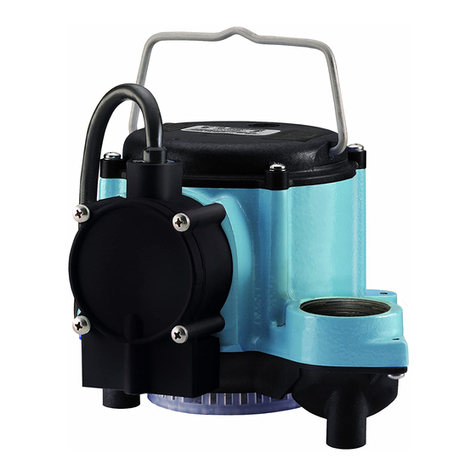
Little Giant
Little Giant 6 Series owner's manual
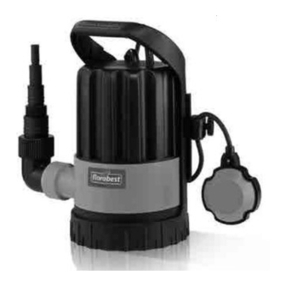
FLORABEST
FLORABEST FTP 400 A1 translation of original operation manual
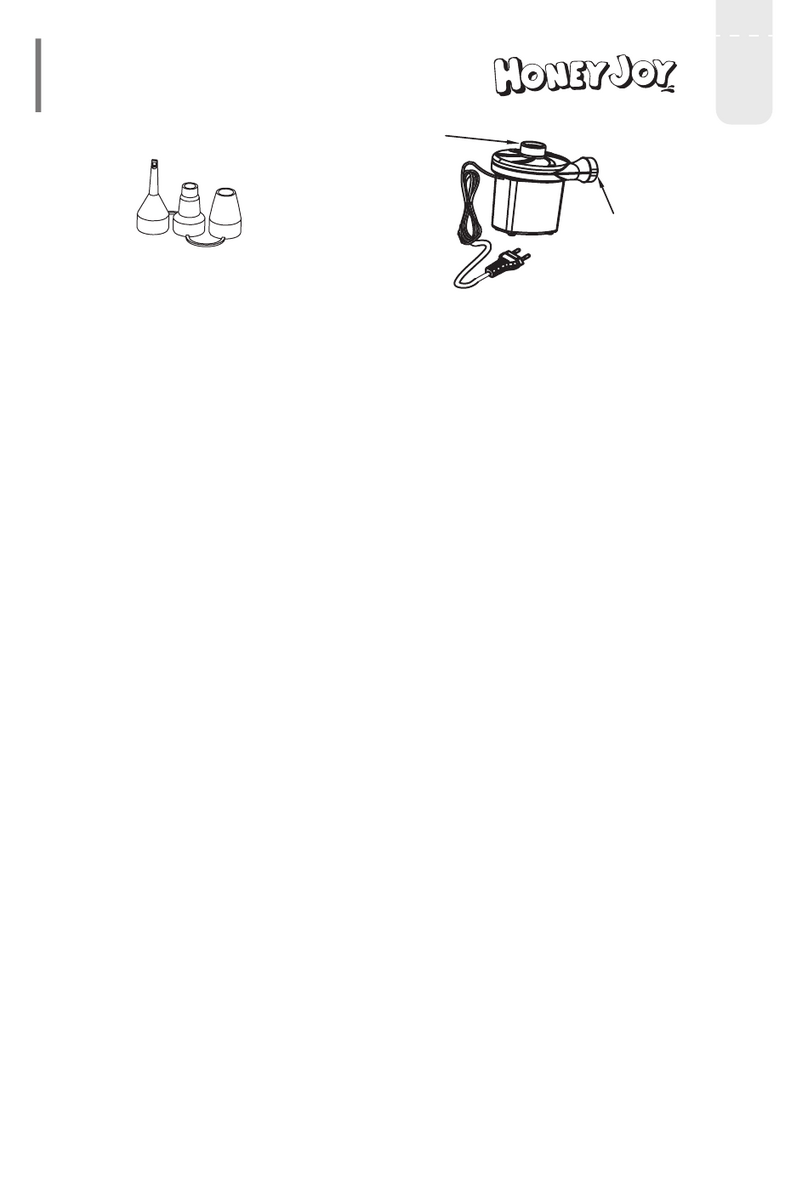
HONEY JOY
HONEY JOY BC10064 manual
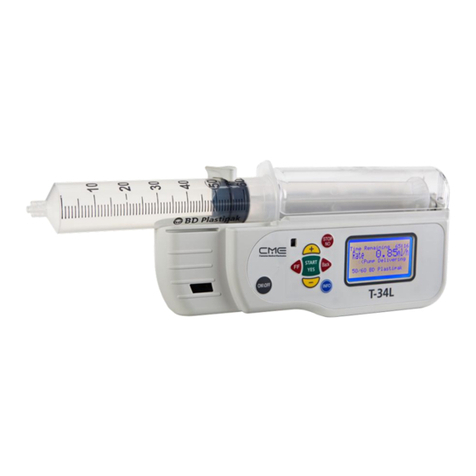
C-me
C-me T34L Operator's manual
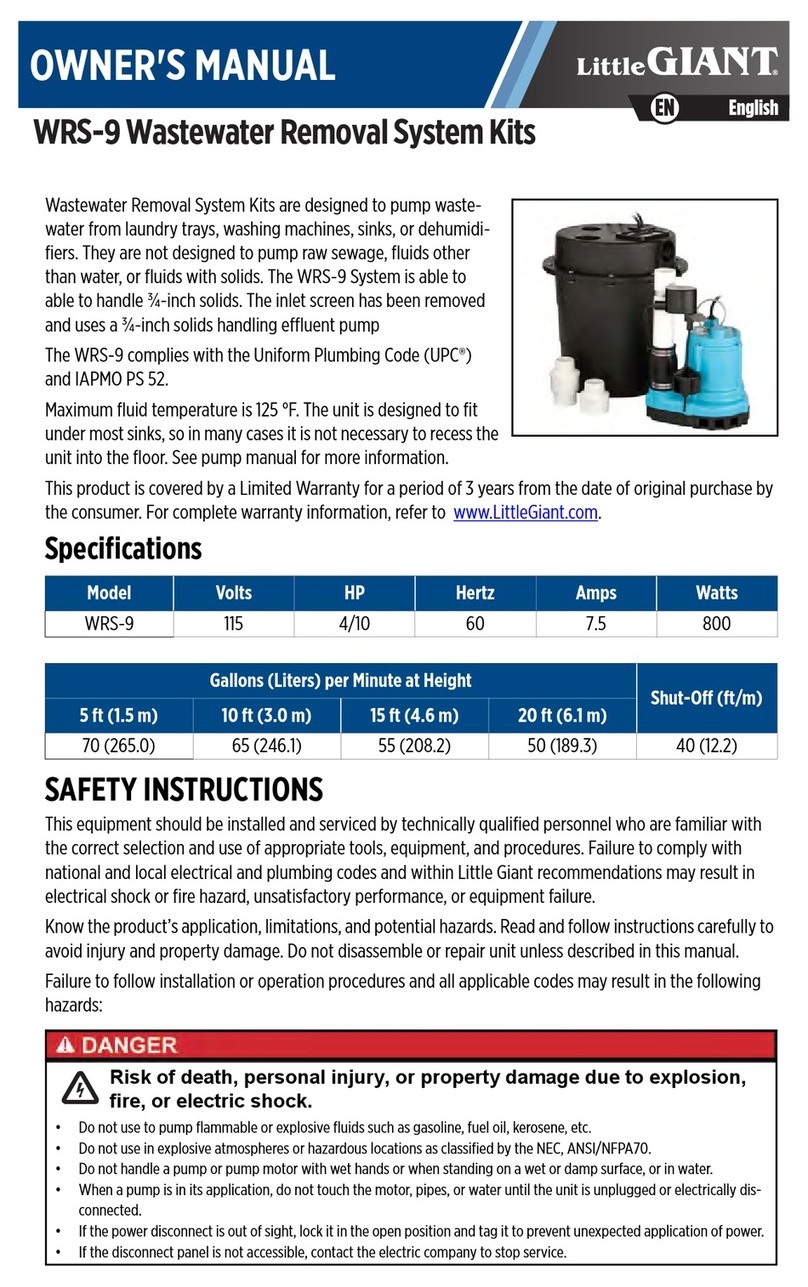
Little Giant
Little Giant WRS-9 owner's manual

Central Pneumatic
Central Pneumatic 67697 Set up and operating instructions
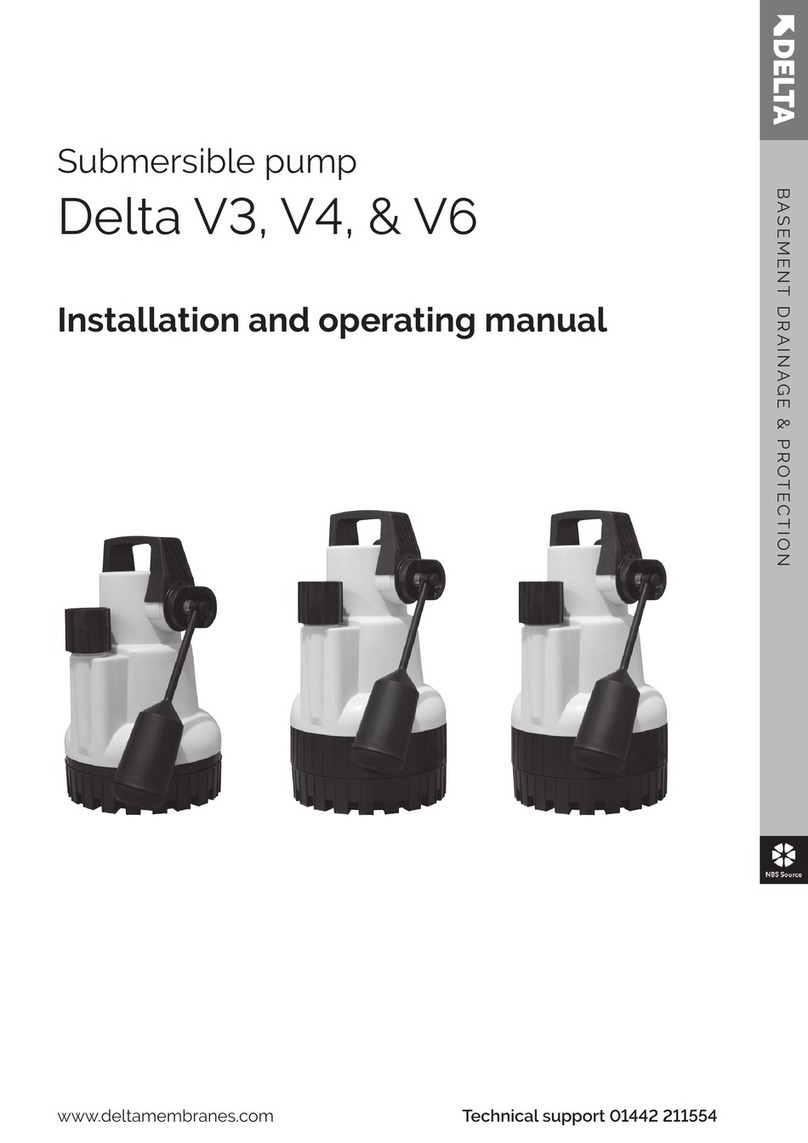
Delta
Delta FOUL V3 Installation and operating manual
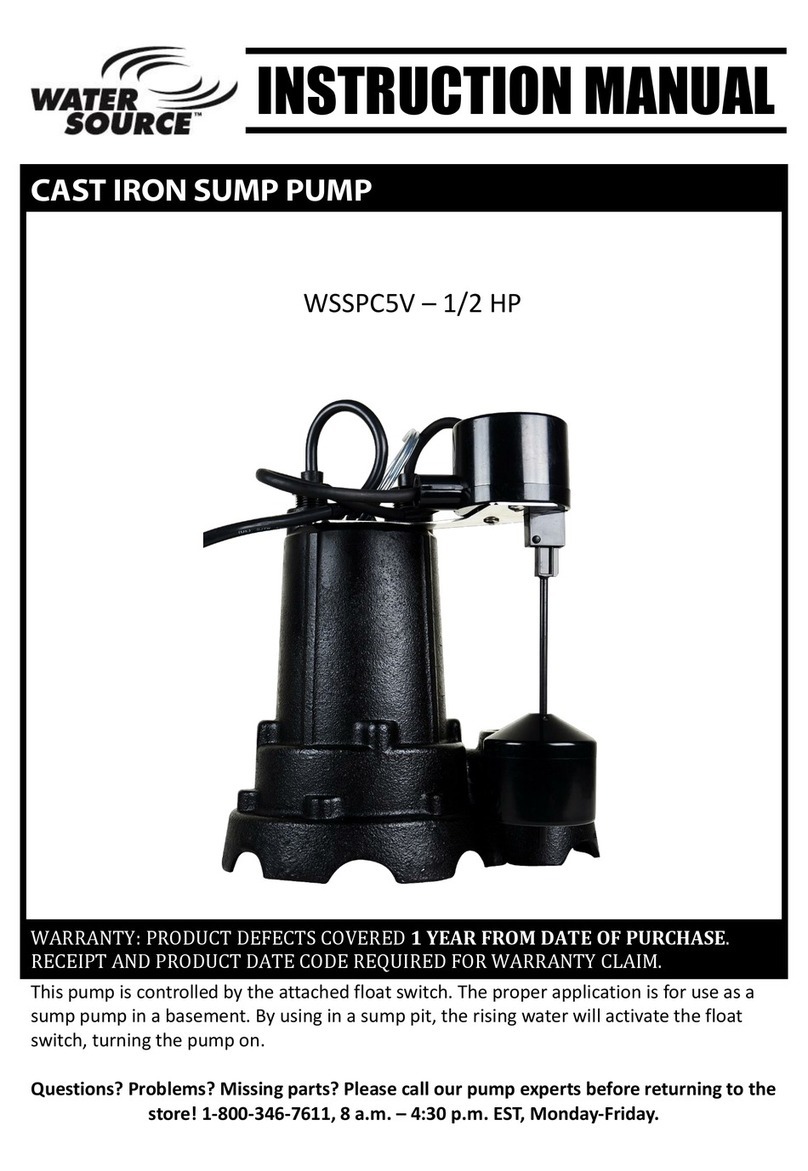
water source
water source WSSPC3 instruction manual

Little Giant
Little Giant 14S Series owner's manual
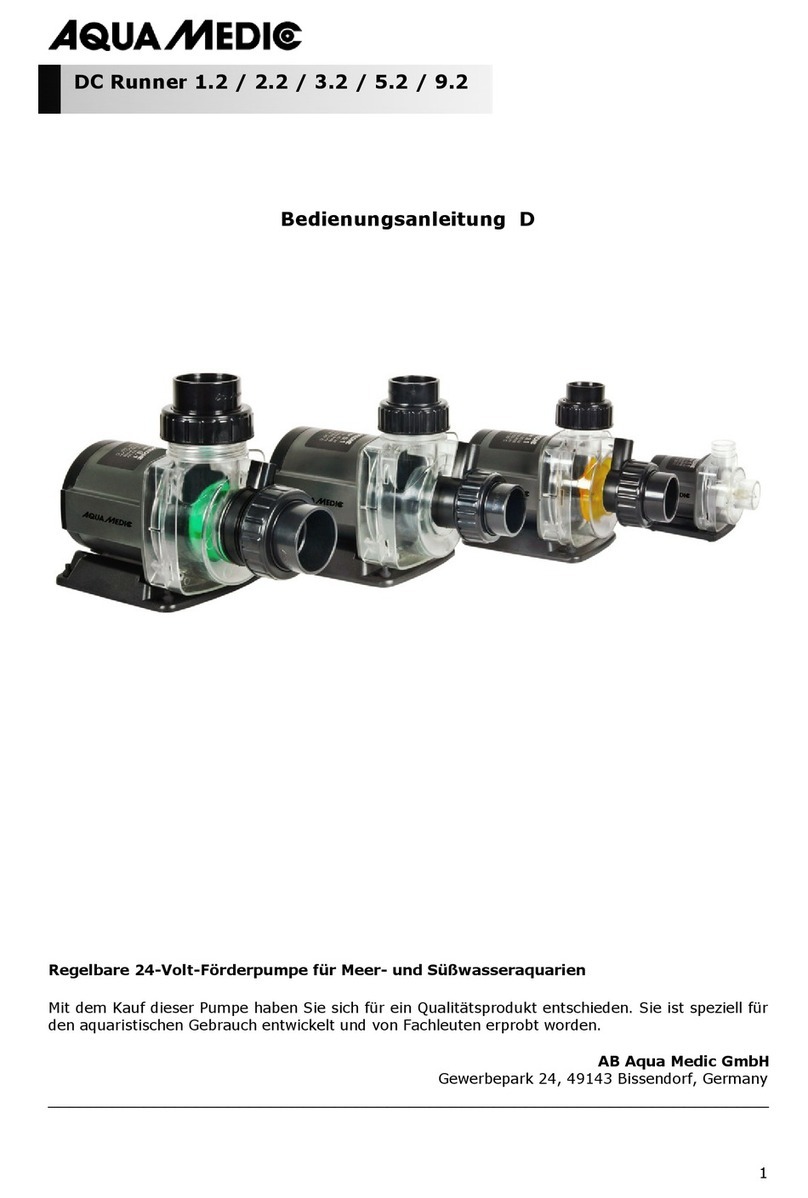
Aqua Medic
Aqua Medic DC Runner 1.2 Operation manual
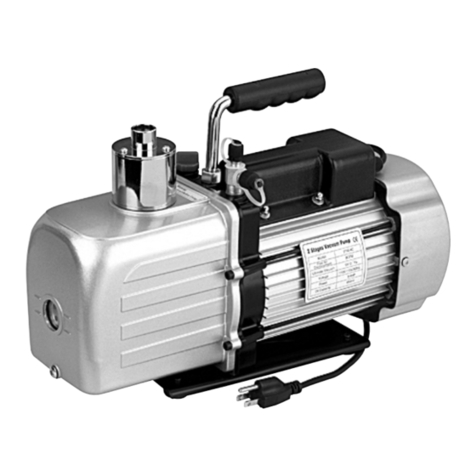
U.S. General
U.S. General 66467 Set up and operating instructions
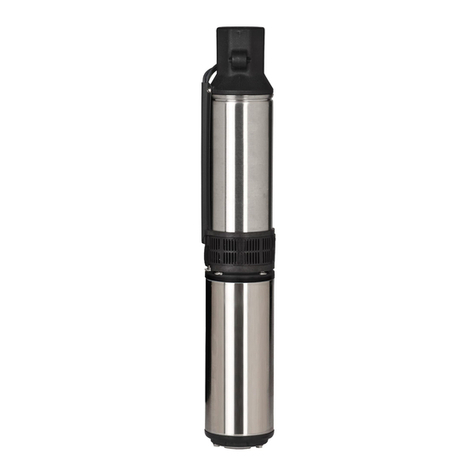
red lion
red lion RL Series owner's manual
